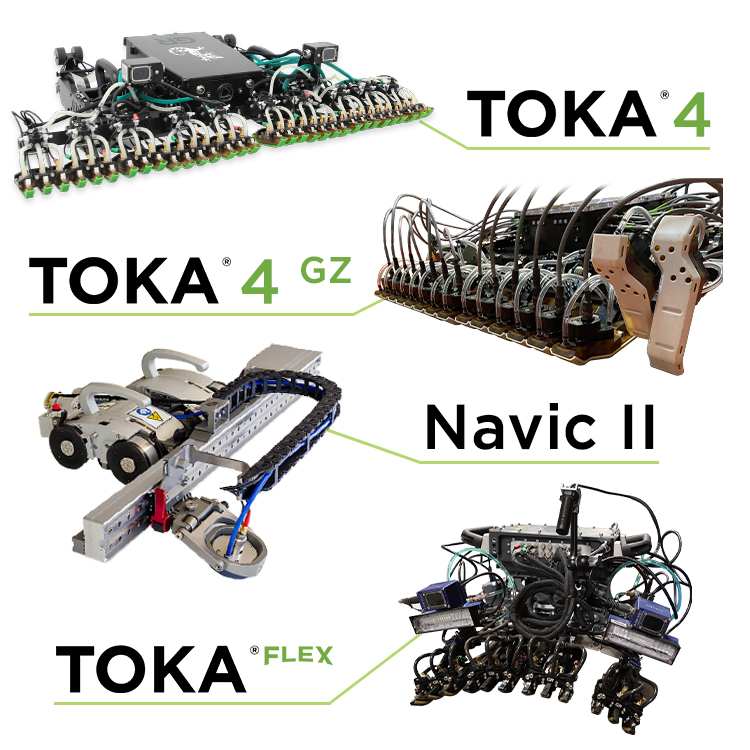Automating Non-Intrusive Inspections Provides Faster Inspections and Better Results
Pressure vessels and other process equipment are traditionally inspected at ½ of the remaining life, based on the rate of corrosion, or every 10 years. In the past, these inspections were conducted manually, with an inspector entering the vessel and conducting visual inspection and/or manual Ultrasonic Tests (UT A-scans). The risk and cost to prepare the vessel for a safe inspection was ginormous (“ginormous” is an exponentially bigger number than just “enormous.”) So, really, really big, okay?
In addition to the loss of production, internal inspection includes the need for emptying and cleaning the vessels, degassing, internal surface preparation, scaffolding or rope access installation, and a host of other costs. More importantly, the process of internal inspection, requiring confined-space entry that is inherently unsafe, as years of accident reporting can verify.
So it’s not surprising that regulatory agencies such as API, NBIC, DNV, and AB have determined that Non-Intrusive Inspection (NII) – or “external inspection in lieu of internal inspection” – conforms with Recognized and Generally Accepted Good Engineering Practices (RAGAGEP) when the external Non-Destructive Evaluation (NDE) methods provide data as good as or better than that provided by internal inspections.
It’s just taken a while for NDE to get to that “as good or better” level of data quality.
But today’s NDE methodology has evolved to deliver much more definitive, much more comprehensive data – in certain applications – than internal inspection. What’s more, the automation of these NDE methods by Gecko Robotics (and others) has further increased the speed of collecting high-quality data while significantly reducing risk.
Know What You’re Looking For In The First Place
You won’t know if you’ve got the data you need unless you first develop a plan that defines your inspection objective. So, before a selection of automated NDE tools can be made, it is essential to develop a comprehensive inspection plan. Building a plan requires gathering:
- Equipment Data, such as design drawings
- Operating History and Operating Conditions
- Previous Inspection History
- Expected or Observed Damage Mechanisms
- Type of Inspection Required (such as defined by DNV RP G-103)
- Inspection Effectiveness Categories (such as defined by API 581)
- And more.
Picking the Right Tools for NII
Once you know what you’re looking for, you can determine which tool in your toolbox is the right one to use to detect and identify the size of the defect appropriately.
-jpg.jpeg)
Manual Ultrasonic Inspection gives you the benefits of Non-Intrusive Inspection, and most plant operators tend to have in-house capabilities of capturing UT A-scans for thickness gauging. This is usually performed at a set of CMLs around the equipment or at a constant spacing across the asset. Since only one reading is taken per distance or grid, Manual UT has a low probability of finding localized corrosion or defects and data may not be statistically representative of actual wall loss.
Manual UT can be used in your NII program but with reduced coverage and confidence and really slow data gathering. Manual UT A-scans are not repeatable; for this reason, a small set of CMLs are relied upon for historical comparison, as opposed to the full surface area.
Additionally, manual inspections tend to require scaffolding or rope access, so you still have an element of risk.
Let’s Automate!
By adding automation technology to NDE equipment you not only increase the speed of the inspection, but also the area of coverage and data points collected. Gecko Robotics is able to deploy a range of automated NDE devices to meet the requirements of RBI within a comprehensive NII plan.
Here is a shortlist of Gecko Robotics’ Automated NDE Tools:

Rapid Ultrasonic Gridding (RUG) is an NDE method of performing ultrasonic thickness testing in which multiple UT probes are utilized, simultaneously, to rapidly gather thickness measurements in a predefined or ad hoc space. Robots can capture up to 176 readings per foot at maximum speeds of 60 feet per minute. That speed enables inspectors to quickly inspect large sections of an asset and provide data density regularly equaling millions of A-scan data points.
RUG’s faster inspection times lead to reduced onsite time by inspection personnel, giving it a significant cost advantage over AUT, while reducing risk at the same time.
RUG is an excellent tool for NII, especially when applied to assets with large surface areas such as piping, fractionator overhead lines, pressure vessels, and tanks.

Rapid Automated Ultrasonic Testing is a new development being offered by Gecko. Seeing the limitations of conventional AUT, Gecko Robotics has invested significantly to apply robotics and cloud processing to enhance the production rate of AUT inspections. By adding a phased array probe that houses 128+ elements, Rapid AUT’s combination of hardware movement and software-controlled pulses results in a much faster AUT approach. We are able to achieve up to 5x the speed and up to 10x the data for the same inspection using conventional AUT. And while faster inspections are always going to be their own reward, the increase in data means fewer false call-outs and greater data accuracy.
Rapid AUT has dense coverage like RUG but at a much higher resolution. This is a perfect tool for mapping out corrosion or when more data is needed for a fitness-for-service (FFS) determination or finite element analysis post-inspection.

Phased Array Ultrasonic Testing (PAUT) “Phased” refers to the timing component of PAUT and “array” to the use of multiple ultrasonic emitters. PAUT ultrasonic beams can be sized, angled, and steered, allowing for extremely detailed mapping or sectorial scanning. We employ well-known techniques such as TOFB, TFM, etc. These techniques are able to reveal difficult-to-detect cracks or other flaws in an asset or obtain thickness measurements.
PAUT delivers a large amount of high-resolution data that can be stored providing users with ultimate confidence in their inspection and their asset lifecycle decisions going forward.
One Size Does Not Fit All
Gecko designs and builds different robots for different conditions. We have robots built for piping assets. We have robots that can work in high temperature environments. Our robots can climb tank walls. Our robots can gather data at high speeds on tank floors.

Gecko’s fleet of RUG, Rapid AUT, and PAUT robots enable detection of a full spectrum of damage mechanisms at any resolution, with the capability of distinguishing damage mechanisms like wall-thinning, coating loss, corrosion, pitting, weld cracking, hydrogen cracking, and more.
Based on your NII objectives, you can choose the type of inspection methodology you need to achieve the inspection plan and your RBI program. Check out how this butane sphere inspection was accomplished per a client's NII initiative.
The Complete Inspection Package.
Non-intrusive inspection methods prove to be the consistently safer option. When paired with automated tools, NII significantly reduces turnaround time and offers highly extensive data. In short-- it’s the complete package.
With a combination of skilled NDT inspectors wielding best-in-class equipment supported by cloud-based data analysis, Gecko Robotics can work with you to develop a comprehensive inspection strategy.
